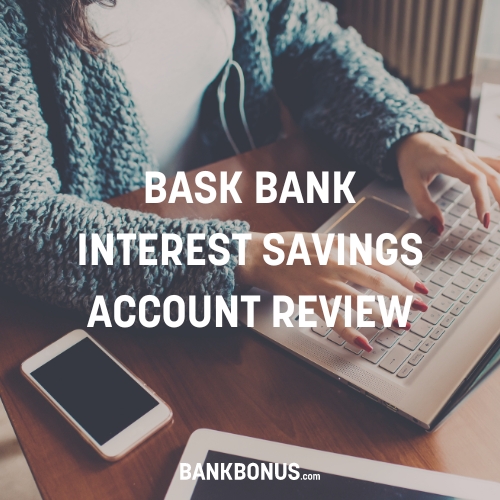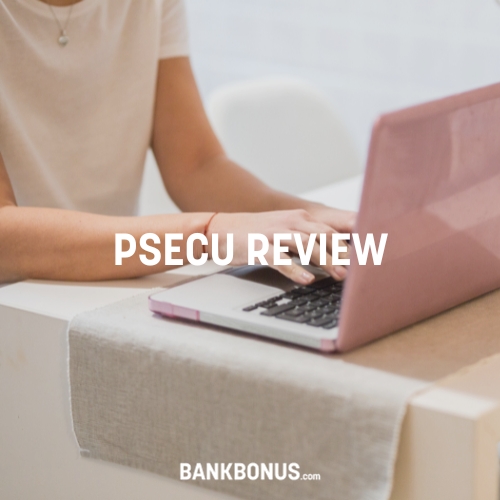Marcus by Goldman Sachs is an online consumer banking division of New York-based Goldman Sachs Bank USA.
Named after Marcus Goldman, one of the investment bank’s founders, Marcus offers some exciting financial products, including high-yield savings accounts, portfolio management, and personal loans.
With a simple, online-only platform and the backing of an investment banking powerhouse, Marcus is quickly gaining traction in the online banking and investing space. This Marcus by Goldman Sachs review can help you determine if it’s the right place for you to save and invest your money.
Marcus by Goldman Sachs Products
Online Savings Account
Marcus has one savings account option, the Marcus High-Yield Savings Account. It pays 8x the national average with a current annual percentage yield (APY) of 3.65%.
There’s no monthly maintenance fee, initial deposit, or minimum balance requirements.
You can make same-day transfers from other banks of up to $100,000, and opening an account online takes just a few minutes.
The downside is that without an option for a linked checking account, making deposits into your savings is a little trickier.
You can set up direct deposits or send an ACH, check, or wire transfer from your other bank to move money into the account.
Overall, online savings is a simple and effective high-interest online savings account with user-friendly tools, no monthly fees, and an interest rate far above the national average.
Learn More:
Certificates of Deposit (CDs)
High-Yield CDs
Marcus’ High-Yield CDs are fixed-rate accounts with CD terms ranging from six months to six years.
The rates are tiered and vary based on the chosen term.
High-yield CDs require a minimum balance of $500, and you can set your account maturity instructions online, whether you want to cash out the CD or let it renew.
Opening a CD online is easy, and with the 10-day CD Rate Guarantee, you get a small window of time to bump up your interest rate if the Fed rate increases rates right after you open your
However, to get this guarantee, you must meet the minimum deposit requirement of $500 within ten days.
Here are the current Marcus by Goldman Sachs High-Yield CD rates:
| Product | APY | Min Deposit |
|---|---|---|
| 6 Month CD | 4.20% | $500 |
| 7 Month No-Penalty CD | 4.00% | $500 |
| 9 Month CD | 4.20% | $500 |
| 11 Month No-Penalty CD | 3.90% | $500 |
| 1 Year CD | 4.10% | $500 |
| 13 Month No-Penalty CD | 3.90% | $500 |
| 18 Month CD | 4.10% | $500 |
| 2 Year CD | 4.10% | $500 |
| 3 Year CD | 3.90% | $500 |
| 4 Year CD | 3.75% | $500 |
| 5 Year CD | 3.75% | $500 |
No-Penalty CDs
Marcus offers a No-Penalty CD with the ability to withdraw your entire balance if you need it, and you won’t pay an early withdrawal penalty.
You won’t have access to the funds for the first seven days after account opening, but after that, it’s yours to move around.
The trade-off is that the APY is lower than the standard high-yield CD unless you choose the 13-month no-penalty CD with a competitive APY.
Here are the current Marcus by Goldman Sachs No-Penalty CD rates:
| Product | APY | Min Deposit |
|---|---|---|
| 7 Month No-Penalty CD | 4.00% | $500 |
| 11 Month No-Penalty CD | 3.90% | $500 |
| 13 Month No-Penalty CD | 3.90% | $500 |
Like the High-Yield CD, you need a minimum deposit of $500 to open an account.
Learn More:
Investment Accounts
Goldman Sachs is one of the most well-known financial institutions in the world when it comes to investing, so it’s no surprise that Marcus has several options for personal investment accounts.
Marcus investment accounts allow you to customize your investment timeline and the level of risk that you want to take.
Based on your goals and strategy, the platform recommends a portfolio allocation of stocks, bonds, and ETFs.
All Marcus Invest portfolios are built and operated based on one of the firm’s three core investment strategies:
- Goldman Sachs Core has a diversified allocation across market-cap index-tracking ETFs (which may include U.S. and international stocks, real estate securities, and investment-grade bonds). This strategy is recommended for buy-and-hold investors who believe in the market’s long-term potential.
- Goldman Sachs Impact follows a strategy similar to Core but specifically focuses on socially conscious and environmentally sustainable investments.
- Goldman Sachs Smart Beta is a portfolio that aims to outperform the market using proprietary tools, research, and analysis from the investment bank’s in-house experts. Note: This option is not available in IRA accounts.
Here are the different types of investment accounts you can open.
Individual Investment Account
An individual account has the flexibility to invest and withdraw money as needed without tax penalties.
Your account and allocation are tailored based on your timeline, financial goals, and risk tolerance.
Remember, if you withdraw any profits from your investments, you’ll likely incur capital gains taxes.
Traditional IRA
A Traditional Individual Retirement Account (IRA) allows you to contribute tax-deferred funds until you withdraw the money for retirement.
Roth IRA
Roth IRA contributions come from after-tax income, but you won’t have to pay taxes on the funds when you withdraw for retirement.
Roth accounts might be a good choice for investors who expect to be in a high tax bracket at retirement.
SEP IRA
Simplified Employee Pension (SEP) IRAs are for self-employed people and have significantly higher pre-tax contribution limits than traditional or Roth IRAs.
Loans
MarcusPay
MarcusPay gives you the option for smaller, higher-interest loans on large purchases.
It allows you to finance purchases ranging from $300 to $10,000, with the option to make monthly payments over 6, 12 or 18-month terms.
APRs range from 8.99% to 29.99%, and MarcusPay loans are fee-free — but of course, you do have to pay back the entire balance plus interest.
Marcus By Goldman Sachs Features
Online Banking
You’ll have 24/7 access to your accounts with Marcus on your desktop or the mobile banking app. You can schedule ACH transfers and monitor your balances and investments.
Mobile App
Most of your interaction on Marcus will be on the Marcus mobile banking app, which lets you transfer money, make loan payments, and manage your account.
The Marcus app has an impressive 4.8-star rating (out of 5) in the App Store, making it among the top-ranking financial apps. The Marcus by Goldman Sachs reviews are slightly lower in the Google Play Store, at 4.6 stars.
Marcus Insights
Marcus Insights is a platform that houses innovative tools and trackers that organize and optimize your financial picture.
As a bonus, you can link your financial accounts to the platform — not just Goldman accounts.
Within the app, you can connect external bank accounts, credit cards, and investment accounts. Once you have all your information in one place, intuitive tools help you understand where you stand and how to move forward.
Marcus Insights analyzes your spending habits, monitors your cash flow, and paints a clearer picture of where your money goes.
Marcus By Goldman Sachs Fees
There isn’t much to discuss in Marcus by Goldman Sachs reviews regarding fees because both the Marcus savings account and the CDs are truly fee-free.
That said, if you’re interested in an investment account, there are some fees you should know.
- Advisory Fee: Every investment account has a standard advisory fee of 0.35%. The fee is based on the average daily value of your assets and is automatically taken from your account each quarter.
- ETF Fees: Most ETFs have fees, but they vary between funds. All ETFs offered are transparent, so you can see the fees before deciding.
- Ancillary Fees: Additional fees could come up for specific requests like paper statements, check copies, or account ownership transfers.
Getting Started
With Marcus, signing up is about as simple as it gets.
Since it’s online-only, you have to enroll on the website, and the application process for most accounts and loans takes only a few minutes.
Once you’re signed up, you can fund your account with an ACH transfer from an external account, a check, or a wire transfer, and you’ll have full access to online banking and personal finance tools.
Marcus By Goldman Sachs Promotions
Unfortunately, there are currently no active Marcus by Goldman Sachs® promotions. Check out these bonus offers instead:
| Bank | Bonus | Expires | Requirements | |
|---|---|---|---|---|
| up to $3000 | September 30, 2025 |
|
Learn More | |
| $400 Cash Bonus* | September 8, 2025 |
|
Learn More | |
| up to $500 | October 16, 2025 |
|
Learn More |
Security
Marcus prioritizes privacy and safe online banking. Backed by a billion-dollar investment bank, Marcus has various security features and policies that protect your account and money.
Marcus has multi-factor authentication, SSL encryption, firewalls, and more for online banking.
Marcus also provides plenty of information and resources to educate customers about phishing scams and identity theft.
They even have a dedicated phone line if you think you’ve been a scam victim.
Customer Service
As an online-only bank, Marcus’ front line of support is an exhaustive list of FAQs on the website covering most issues.
There’s also dedicated phone support for each product area. Each department has different hours of availability.
Customer Reviews
Marcus by Goldman Sachs currently has a 2.7 out of 5-star rating on Trustpilot with only 271 customer reviews. Here are what some customers of Marcus have to say:
5-Star Customer Review:
I opened this account almost 2 years ago and have to say the APP is so easy to use and Marcus is excellent and speedy at raising the interest rates on savings. Transfers and withdrawals really could not be any simpler and for someone who is not that tech savvy, I am very pleased with everything about this account.Dawn Grudziak Trustpilot
4-Star Customer Review:
I’ve really liked having my money in my Marcus account. It’s safe and easy to use. My only negative is the rates have been a little inferior to alternative savings accounts BUT the experience is great.Emily H. Trustpilot
3-Star Customer Review:
Good rates and easy to set up / use the app. I have an ISA with them and a savings account and I like both. But they’re a bit too paranoid about security that you’d think my account is top secret given the number of steps and days it takes to change any linked account. They have to modernize to be in the 21st century’s instant money movement.RS Trustpilot
Pros & Cons
Pros:
- Excellent interest rates
- Top-notch high-yield online savings account
- Almost no fees
Cons:
- Limited account options (e.g., no checking)
- No ATM card
- No physical branches
- No mobile check deposit
Alternatives to Marcus By Goldman Sachs
While Marcus is an excellent online bank with no monthly fees, the biggest drawback is the lack of a linked checking account.
If you’re interested in online banking but need more account options, you might want to check out online-only banks like Ally or Axos, which both offer similar high-yield savings accounts along with checking and other account options.
Additional online options include Betterment, Wealthfront, Chime, and CIT Bank.
Frequently Asked Questions
Is Marcus by Goldman Sachs legit?
Yes, Marcus is legit. Better yet, it’s one of the best options out there when it comes to high-yield savings accounts. It also helps to know that Goldman Sachs, a household name in the finance world, backs Marcus.
Is Marcus bank safe?
Yes. Marcus savings accounts are FDIC-insured, meaning your HYSA and CD deposits are protected up to $250,000 if the bank fails. Marcus Invest accounts are backed by Goldman Sachs, which is a member of FINRA and the SIPC, so your funds are safe there, too (other than the general risks of investing in the market). Regarding online safety, Marcus has plenty of practices in place to protect your money.
How often does Marcus pay interest?
Interest from Marcus is compounded daily and is paid to your account monthly.
How long does it take to withdraw funds from Marcus?
If you make an ACH transfer, the funds take one to three business days to leave your Marcus account. From there, you’ll have to check with the institution receiving the funds to determine their availability.
Is Marcus By Goldman Sachs Right For You?
Marcus by Goldman Sachs offers one of the best online banking platforms with a clean, user-friendly interface and high-earning account options.
Add that to intuitive financial tools and expert-level investment services, and there’s more than enough here to consider Marcus as your next banking and financial partner.
Marcus by Goldman Sachs reviews to determine that the account options are limited, but the choices you do have are well worth your time.
You won’t find more competitive rates than those in Marcus’ savings accounts and CDs, and there are also plenty of attractive options for an investment portfolio.
Conversely, Marcus doesn’t offer enough to serve as your only banking partner. You’ll have to look elsewhere for checking accounts and credit cards.
While Marcus has a helpful website and mobile app, if you need an in-person banking experience, you’ll have to look elsewhere.
The bottom line is that Marcus is highly recommended for HYSA accounts, CDs, and investing.
But if you’re looking for your first bank account or need the services of a traditional online bank, this type of account is probably not for you.





Comments are closed.
Comments are closed here.